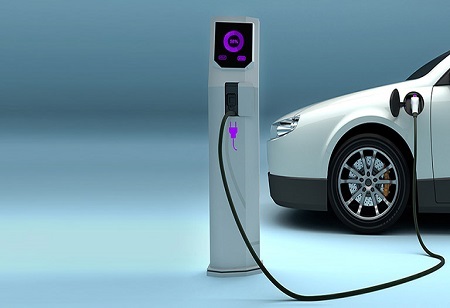The
automotive industry today is facing accelerating pressure to decrease the vehicles' environmental impact. It is also experiencing rapid technological change, along with the shape of electrification, connectivity, autonomy as well as new business models. While for generations, internal combustion engine improvements drove automotive innovation today, the
automotive batteries are the new engine for innovative electric vehicle development. Electric Vehicles sales are predicted to increase dramatically as deadlines for government emission mandates approach & consumer demand surges. A few industry analysts are forecasting sales to grow fifteen times by 2030.
However, this growth will not take place without any surge in the pace of scientific as well as engineering innovation. Augmenting R&D to deliver fast-charging as well as longer-range batteries is one of the keys to the future success & adoption of greener & more sustainable Electric Vehicles. Firms achieving scientific & engineering breakthroughs in
EV battery cell development, as well as manufacturing will be the leaders of this new era.
The automotive sector will represent over eighty per cent of lithium-ion battery demand by the end of 2030 and the vehicle manufacturers require batteries which achieve the perfect balance of cost, energy density as well as life cycle impact while navigating volatile raw material prices.
Numerous challenges are continuing to confront battery development. Electric Vehicle battery cells stay expensive & are high in mass & need rare materials. However, the driving distance between charges should be increased. Although questions remain about long-term reusability or recyclability, all of this means that EV battery cell innovation has become automotive's moonshot.
Realistic virtual testing with multiphysics simulation
Undoubtedly, Electric Vehicles battery innovation is a multifaceted problem and hence to address this the advancements in materials, cell architecture, vehicle module as well as pack integration, safety & vehicle performance should all rise to the challenge. The needed expertise is neither found in a single design nor engineering
group however is spread out across the firm & among supply chain partners.
Emerging technologies for unified design as well as modeling & simulation facilitate collaboration among vehicle designers as well as battery engineers throughout the complete development cycle right from chemistry & materials to cell & pack design to vehicle integration as well as vehicle performance analysis. Realistic virtual testing with multiphysics simulation facilitates design & engineering teams in evaluating more material as well as design alternatives for achieving optimal solutions more rapidly.
For instance, in order to accurately model as well as simulate battery swelling needs tight integration among science & engineering disciplines as well as virtual tools. The multidisciplinary nature of battery development drives the unified design & MODSIM to a new level, since the battery & EV chassis become integrated as 1 unit in a way never possible with combustion vehicles.
Innovative prismatic battery cell technology
Let us imagine pure electric cars that come with a driving range of over 300 kilometers on a single charge, or about super performance cars which are not only perfect for highly competitive races, but also consume less fuel, and helps in reducing carbon footprints. Whatever you think about, the new innovations in Samsung SDI battery is making those dreams a reality for not just automakers but even for tomorrow's drivers. While the ideal battery would be safe, small as well as light it should still being capable of delivering large amounts of energy. Since lithium is the 3rd lightest element & is the lightest metal, it allows lithium-ion batteries higher energy density/unit mass than various other chemistries that are based on nickel or lead, lithium-ion battery manufacturers among the others are the winners and would be the one who can manufacture the lithium-ion battery with higher energy density within given space.
The firm’s success in consumer IT battery applications has made it to realize that it can assist the automotive sector to address several other challenges like powertrain performance, fuel economy & carbon-di-oxide reductions by applying its latest battery technologies.
By making technological transitions at the manufacturing level comprising manufacturing automation, not only the overall battery cost can be reduced, but it can also increase yields as well as production speed. The market order will be shaped as per the manufacturing yields since the EV market grows and new entrants with technological competence at smaller scales are likely to witness production difficulties & higher manufacturing costs.
The prismatic lithium-ion battery that is supplied by Samsung SDI for automotive applications hold a relatively short production lead time & high process stability which results in higher productivity as well as cost reduction when compared to other types of batteries.
The road ahead
Roughly eighty percent of the raw materials that are used in IT batteries are used in automotive batteries and this is to achieve better economies of scale via large-scale procurement that is leveraging the total value chain. The race for achieving Net Zero has augmented new waves of research, innovation, change as well as opportunity. Some of the industries are either evolving or have ever evolved, at the pace which comes close to the energy industry at present. Innovation and research are everywhere.
